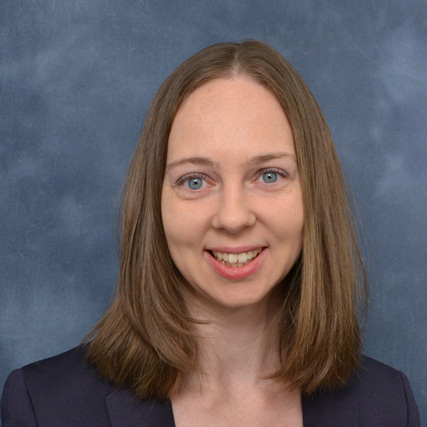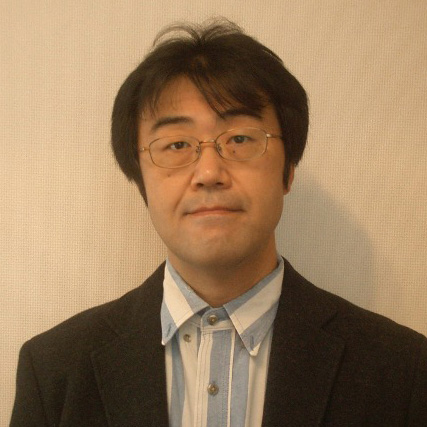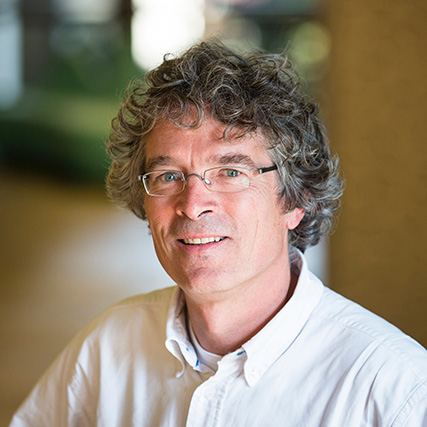Keynote Speakers

Prof. Joshua S. Weitz
School of Biological Sciences, Georgia Institute of Technology
Short Introduction
Joshua Weitz explores how viruses transform the fate of cells, individuals, populations, and ecosystems. In collaboration with experimentalists, his research in viral ecology has revealed latent structures of virus-host infection networks, identified principles underlying the therapeutic use of viruses against bacterial pathogens, and shown how repeated infections catalyze the diversification of complex virus-microbe communities. Weitz is the author of the award-winning book "Quantitative Viral Ecology: Dynamics of Viruses and Their Microbial Hosts". Weitz's recent and ongoing work on pandemic dynamics examines how behavior change and asymptomatic spread shape outbreaks and can be used to inform data-driven interventions.
Talk Title
Eco-evolutionary Dynamics of Bacteriophage, An Imperfect Viral Predator
Summary of talk
Viruses of bacteria transform the fate of microbial cells, populations, and communities. This talk will introduce mathematical models of phage-bacteria population dynamics along with experimental evidence that shows when such models work and when, because of (co)evolution, far more unusual dynamics can unfold. Then, I will show how to extend principles of phage-bacteria interactions to realistic settings, including the role of phage in antibacterial therapy and surface marine ecosystems, revealing how viral influence changes when embedded as part of complex systems.

Prof. Jessica A. Belser
Influenza Division, Centers for Disease Control and Prevention (US CDC)
Short Introduction
At the Centers for Disease Control and Prevention, Jessica Belser's research focuses on the pathogenicity, transmissibility, and tropism of novel and emerging influenza viruses with pandemic potential, with an emphasis on those within the H7 subtype. Additionally, she studies how influenza viruses in general, and H7 subtype viruses in particular, are able to replicate specifically within ocular tissue, and use the eye as a portal of entry to establish a respiratory infection. She has developed several in vitro, ex vivo, and in vivo models (primarily using the ferret) to accomplish this work.
Talk Title
Modeling Influenza A Virus Pathogenicity and Transmissibility in Ferrets
Summary of talk
The ferret model serves as an invaluable species for the coincident study of influenza A virus (IAV) pathogenicity and transmissibility, providing critical information towards understanding virus-host interactions, molecular determinants of virulence, immunogenicity and correlates of protection, and the evaluation of novel vaccines, antivirals, and therapeutics. However, interpreting and contextualizing data generated from the ferret model can pose a challenge to both virologists and wider audiences interested in the public health implications of this research. In addition to expected strain-specific and subtype-specific phenotypic differences between IAV following infection in ferrets, there is underappreciated heterogeneity in experimental designs, sample collections, and reported results between laboratories working with this model, which can limit rigorous interpretation of findings generated from this work. Here, use of the ferret as an in vivo model to study IAV pathogenicity and transmissibility will be described, and studies linking results from this work with data obtained following human infection with IAV will be highlighted. Meta-analyses inclusive of IAV that display a diverse range of phenotypes in ferrets can provide valuable information on a range of topics, offering insight into parallel studies conducted in vitro as well as within-host and between-host viral dynamics in vivo; these can include identifying features of in vitro experimentation that are most predictive of in vivo outcomes, and improving interpretation of viral spread at discrete sites of replication throughout the respiratory tract post-infection in vivo. Understanding both the challenges and opportunities of translating data generated from IAV-infected ferrets for modelling applications can result in higher-quality studies, ultimately leading to improved utility of these efforts towards understanding the pandemic potential of novel and emerging IAV.

Prof. Akira Sasaki
School of Advanced Sciences, SOKENDAI (The Graduate University for Advanced Studies)
Short Introduction
I am working on the stochastic theory of population genetics, host-parasite coevolution, species packing theory, spatially explicit models of ecology and epidemiology, intrahost dynamics of pathogen and immune system, bet-hedging in changing environment, evolution of cooperation, evolution of mutability in fitness landscapes, restriction avoidance in phage genome, spatial evolutionary dynamics of Müllerian mimicry, epidemiology and evolution of virulence in heterogeneous networks, and on other problems in theoretical population biology.
Talk Title
Mathematical Models Describing Evolutionary Immune Escapes of Pathogens
Summary of talk
Despite the propensity for complex and non-equilibrium dynamics in nature, eco-evolutionary analytical theory typically assumes that populations are at equilibria. In particular, pathogens often show antigenic escape from host immune defenses, leading to repeated epidemics, fluctuating selection, and diversification. We model the evolutionary chase and escape of pathogen antigenicity and host immune system by using a reaction-diffusion system in antigenicity space. The system describes the pathogen immune escape as coupled traveling waves of pathogen antigenicity and host specific-immunity. Our analysis predicts how the speed of antigenic escape of pathogen (traveling wave speed) depends on epidemiological and genetic parameters, as well as the condition under which a stable traveling wave becomes destabilized, resulting in periodic bursts of pathogen outbreaks both in time and antigenicity space. Our model also predicts how this antigenic escape impacts the evolution of transmission and virulence of a pathogen. An extended model incorporating the effect of heterogeneity in host immune competence is also analyzed, showing that the presence of immunocompetent hosts sensitively speeds up the evolution rate of antigenic escape.

Prof. Takeshi Noda
Institute for Life and Medical Sciences, Kyoto University
Short Introduction
I am a pure virologist and have been working on influenza and Ebola viruses mainly from ultrastructural and structural perspective using electron microscopy and cryo-electron microscopy. After the pandemic of SARS-CoV-2, I started interdisciplinary studies with developmental biologists and have been studying how SARS-CoV-2 replicates in human respiratory epithelium and causes respiratory diseases.
Talk Title
The mechanism underlying long-term olfactory dysfunction induced by SARS-CoV-2 infection
Summary of talk
The nasal epithelium (NE) is the main target of SARS-CoV-2. The virus can cause persistent olfactory dysfunction as a sequela of COVID-19. However, it is unclear how the virus replicates in human NE and causes long-term olfactory dysfunction. Here, using human embryonic stem cells, we generated human NE organoids comprising not only nasal respiratory epithelia (NRE) but also olfactory epithelia (OE) containing neuronal cells. The NE organoids supported efficient replication of SARS-CoV-2. Angiotensin-converting enzyme 2 (ACE2)-knockout NE organoids demonstrated that SARS-CoV-2 replicates in human NE in an ACE2-dependent manner. Single-cell RNA sequencing and immunostaining demonstrated that SARS-CoV-2 initially replicates in NRE and then spreads to neural precursor cells (NPCs) and basal stem cells, which are olfactory sensory neuron precursors in the OE. Cell damage- and cell death-associated genes were upregulated in the NPCs and basal stem cells in the virus-infected organoids, suggesting that SARS-CoV-2 infections cause long-term disruptions in the repair and renewal of olfactory sensory neurons. These findings provide novel insights into SARS-CoV-2 replication in human NE and suggest a mechanism underlying the long-term olfactory dysfunction in COVID-19 patients.

Prof. Miles Davenport
Kirby Institute, University of New South Wales
Short Introduction
Miles Davenport leads the Infection Analytics Program at the Kirby Institute at UNSW Sydney. His team of applied mathematicians incorporate statistical and computational approaches to understand infection and immunity. His research focus is on using modelling to analyse host-pathogen interactions in infections including SARS-CoV-2, HIV, and malaria. He has a wide variety of clinical and experimental collaborations both within Australia and overseas and his work aims to integrate experimental data and modeling. He is a past-President of the Australasian Society for Immunology, past Section Editor at Journal of Immunology, and current Senior Editor at eLife. His seminal work defining the correlates of protection from SARS-CoV-2 infection has helped inform vaccine policy for COVID-19 and understand immunity to viral variants.
Talk Title
Mechanisms of immunity to SARS-CoV-2 infection
Summary of talk
SARS-CoV-2 vaccination and infection elicit both cellular and humoral immune responses to viral proteins. Neutralising antibody titres have been shown to predict protection from both symptomatic and severe COVID-19. Studies of antibody titres show they remain predictive of protection over time and against emerging SARS-CoV-2 variants. In addition, studies of passive antibody administration (convalescent serum and monoclonal antibody) demonstrate that antibodies alone can directly mediate immune protection from both symptomatic SARS-CoV-2 infection and from progression from symptomatic to severe COVID-19. Protection after passive antibody administration occurs at similar antibody titres to that seen after vaccination, suggesting that neutralizing antibodies are a major factor in vaccine-mediated protection. Despite immunity from vaccination and / or prior infection, ‘breakthrough infection’ is frequently observed. This is accompanied by recall (activation and expansion) of both the humoral and cellular responses to infection. The contribution of recall immunity to control of SARS-CoV-2 viral replication is unclear. However, the level of activated virus-specific CD8+ T cells present early in infection is predictive of lower viral peaks and faster viral clearance. By contrast, recall of serological responses likely occurs too late to have a major effect on clinical outcome. Analysis of viral and immune kinetics has provided a unique insight into the mechanisms of immune control in SARS-CoV-2 infection.

Prof. Rob de Boer
Department of Biology, Utrecht University
Short Introduction
In our work we aim to develop a more quantitative immunology by combining in vivo labeling techniques with mathematical modeling, to describe the population dynamics of the major populations within the immune system. We also aim to quantify the diversity of lymphocyte repertoires, and the breadth of immune responses, by bioinformatic analysis of next generation sequencing data.
Talk Title
T cells contributing little to a first response contribute more to subsequent immune responses
Summary of talk
During a primary immune response to a pathogen hundreds of naive T cells are recruited into clonal expansion. Some cells expand vigorously and make up most of the immune response, and some cells stop dividing early and form only a small family of progeny [Gerlach et al Science 2013]. Using a novel experimental system by which one can trace the division history of a population, we recently found that secondary immune responses originate from such small families, and that the large families contribute little [Bresser et al Nature Immunology 2022]. We develop mathematical models aiming to quantitatively and mechanistically combine and explain these surprising observations.